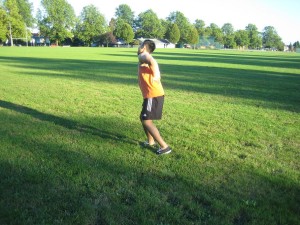The indications of Gilmore’s groin typically include groin pain that is worsened by sprinting, running, turning and twisting. After a training session, the individual will feel sore or stiff. A day after the training, the individual will experience groin pain when turning or simply getting out of a car. Sneezing and coughing can also cause groin pain. Some athletes might have a history of abrupt injury but most indicate it as a gradual overuse injury. To learn to recognize and manage muscle conditions and injuries, register for a first aid class today.
Overview on Gilmore’s groin
Gilmore’s groin was initially identified back in 1980 as a cause of long-lasting groin pain. This condition is oftentimes called the sportsman’s hernia, however such symptoms of a hernia are often misdiagnosed since there is actually no hernia present. It is quite common in sports that involve substantial strain on the pelvic area and groin through kicking and twisting movements. Those who play sports such as soccer, rugby or football are usually injured.

Gilmore’s groin is considered as a complex condition which is why it is not yet fully understood until recently and the reason why many cases are misdiagnosed as a hernia or groin strain.
The injury occurs at the junction of the leg and the torso. It involves the area where the abdominal muscles meet to form the inguinal ligament. The external oblique muscle possesses an archway where several nerves and vessels pass. A Gilmore’s groin involves a tear on the groin muscle that causes this archway to open up wider. Additional tears in the oblique can cause them to lift up and away from the inguinal ligament, thus leaving the transversus abdominus muscle without any support.
Treatment of Gilmore’s groin
Even though it is possible for the individual to continue training with Gilmore’s groin, the condition is likely to worsen. Conservative treatment of this condition typically involves strengthening the muscles in the pelvic area with focus on core strengthening. It is recommended that the individual will consult a sports injury professional so that an accurate diagnosis can be given. The appropriate treatment plan can also be started so that the individual can resume his/her sport or activity.
If the individual did not respond to a thorough rehabilitation program, surgery is usually indicated which is usually successful in most circumstances. Right after surgery, the individual will undergo a 4-6 week rehabilitation phase that is required before the individual can return to any activity or sport he/she previously engages in. The rehabilitation program focuses on gradually improving the strength and flexibility of the pelvic muscles. The individual should be well aware to avoid abrupt twisting and turning movements that can worsen the injury particularly in certain sports.
